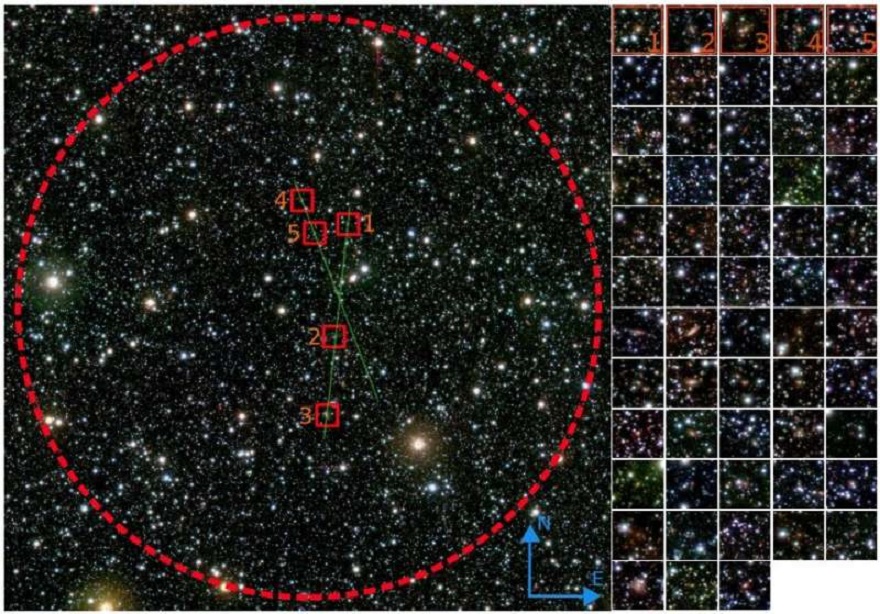Scientists were able to look into the region of space closed from us by the Milky Way. They found 58 previously unknown galaxies that form a huge structure.

How to look beyond the Milky Way?
The solar system belongs to the Milky Way galaxy, but is located on its periphery. Because of this, the central regions of our “Star Island” close more remote objects from us. The area where we can’t observe galaxies is about 10 percent of the entire sky.
A team of researchers with members of the Universidad Nacional de San Juan, Universidade Federal do Rio Grande do Sul and Universidad Andres Bello decided to correct this situation as part of the VVV project.
In it, scientists observed the sky not in the visible, but in the near-infrared range of waves. Radiation at these frequencies passes much better through gas and dust clouds, so scientists have at least a partial opportunity to see what is hidden behind the Milky Way.
Huge structure on the other side of the Galaxy
The study was carried out using several state-of-the-art astronomical instruments located in various locations in the Southern Hemisphere. The researchers also had the most complete catalogs of Galactic and extragalactic objects at their disposal. With their help, scientists were able to identify several dozen objects in the “Zone of Avoidance”, which until now remained unknown.
Then scientists find out whether these objects are galactic, or are located far beyond the Milky Way. For this purpose, they checked whether the lines of the elements in their spectra were shifted to the red side. This is called a redshift, and according to Hubble’s law, we can determine the distance to an object.
In 58 newly discovered objects, the redshift was approximately equal to 0.22. This indicates that they are galaxies that are located at a distance of 2 billion light-years. The fact that the distances to them are more or less the same indicates that in fact it is a single huge structure.
Such colossal galaxy associations are called clusters. They are commonplace in the surrounding Universe. But the opportunity to see that part of it that has not yet been mapped on any maps really expands our understanding of it.
According to phys.org
Follow us on Twitter to get the most interesting space news in time
https://twitter.com/ust_magazine

